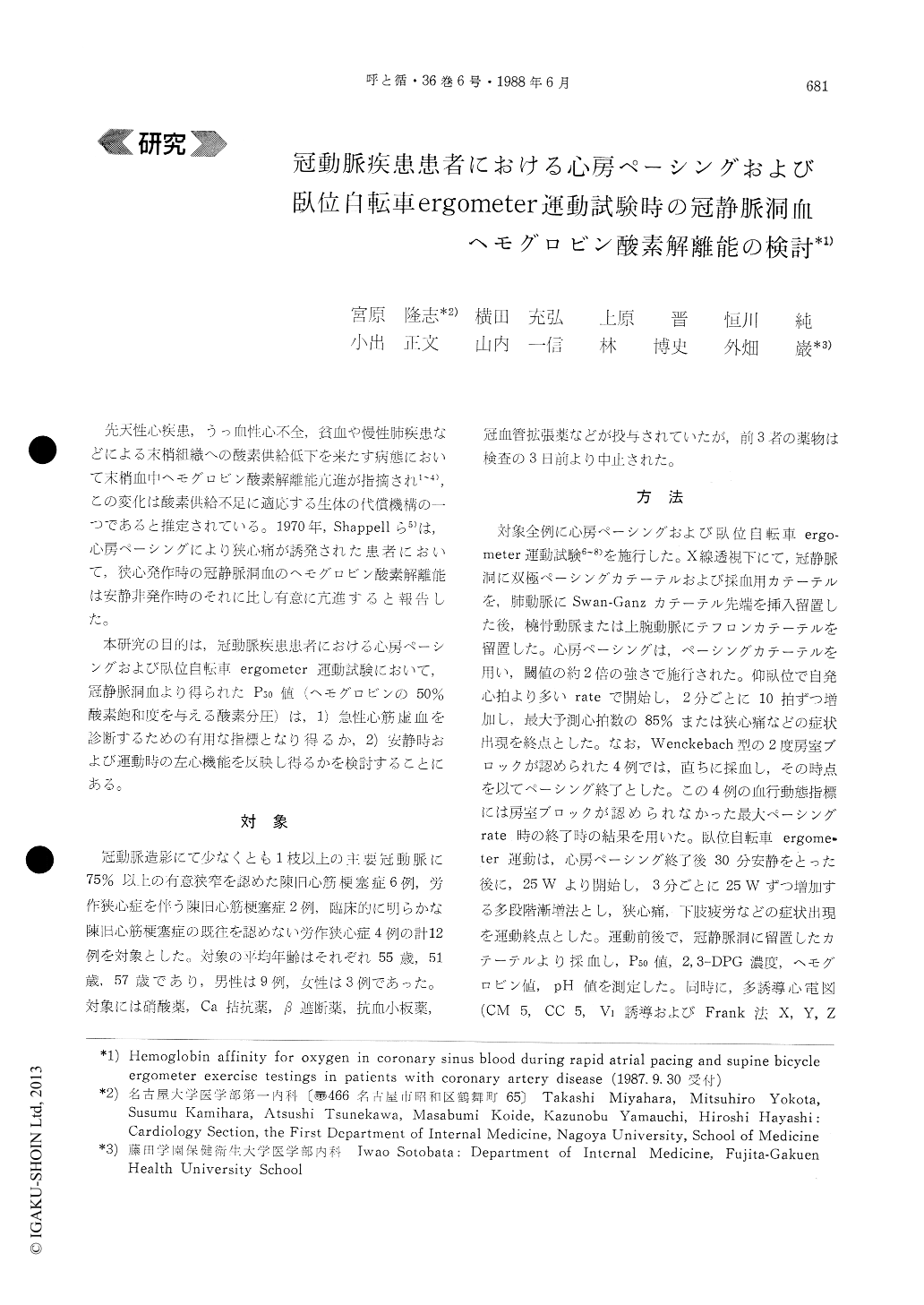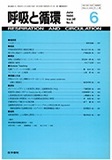Japanese
English
- 有料閲覧
- Abstract 文献概要
- 1ページ目 Look Inside
先天性心疾患,うっ血性心不全,貧血や慢性肺疾患などによる末梢組織への酸素供給低下を来たす病態において末梢血中ヘモグロビン酸素解離能亢進が指摘され1〜4),この変化は酸素供給不足に適応する生体の代償機溝の一つであると推定されている。1970年,Shappellら5)は,心房ペーシングにより狭心痛が誘発された患者において,狭心発作時の冠静脈洞血のヘモグロビン酸素解離能は安静非発作時のそれに比し有意に亢進すると報告した。
本研究の目的は,冠動脈疾患患者における心房ペーシングおよび臥位自転車ergometer運動試験において,冠静脈洞血より得られたP50値(ヘモグロビンの50%酸素飽和度を与える酸素分圧)は,1)急性心筋虚血を診断するための有用な指標となり得るか,2)安静時および運動時の左心機能を反映し得るかを検討することにある。
The purpose of this study was to evaluate whether P50 (the partial pressure of oxygen at which 50% of hemoglobin is saturated with oxygen) levels in coronary sinus blood (CSB) can be a useful index to predict acute myocardial ischemia and can reflect left ventricular function during rapid atrial pacing (APc) and supine bicycle ergometer exercise (BEX) testings in patients with coronary artery disease(CAD). The subjects consisted of 12 patients (mean-age 54 yrs ; range 46-66 yrs) with CAD. Peak APc rate was set at 85% of maximal predicted HR, and BEX was performed up to the appearance of sym-ptoms such as angina. An anginal attack was indu-ced in 4 patients during both APc and BEX. CSB was sampled for the measurement of P50 and 2,3- DPG concentrations and pH before and immediately after APc and BEX. An influence of angina on cha-nges in P50 levels in CSB was evaluated, and P50 levels in CSB were compared with hemodynamic parameters such as cardiac index before and imme-diately BEX and with exercise time. APc produced no significant change in P50 levels in CSB. Of 4 patients with APc-induced angina, 2 had an increase in P50 levels in CSB, and 2 had a decrease in Pso levels in CSB. BEX produced a significant increase in Pso levels in CSB. This phenomenon might be explained by the Both effect. Three of 4 patients with exercise-induced angina also had an increase in P50 levels in CSB, which was not considered a specific change for patients with BEX-induced angina. P50 levels in CSB at rest had no significant correla-tion with cardiac index at rest. However, Pso levels in CSB at rest showed a significant negative cor-relation with cardiac index at peak exercise and with exercise time. It was suggested that measurements of P50 levels in CSB cannot be used to predict acute myocardial ischemia, but that P50 levels in CSB at rest might reflect left ventricular function during dynamic leg exercise and could be a useful parameter to estimate cardiac reserve.

Copyright © 1988, Igaku-Shoin Ltd. All rights reserved.


